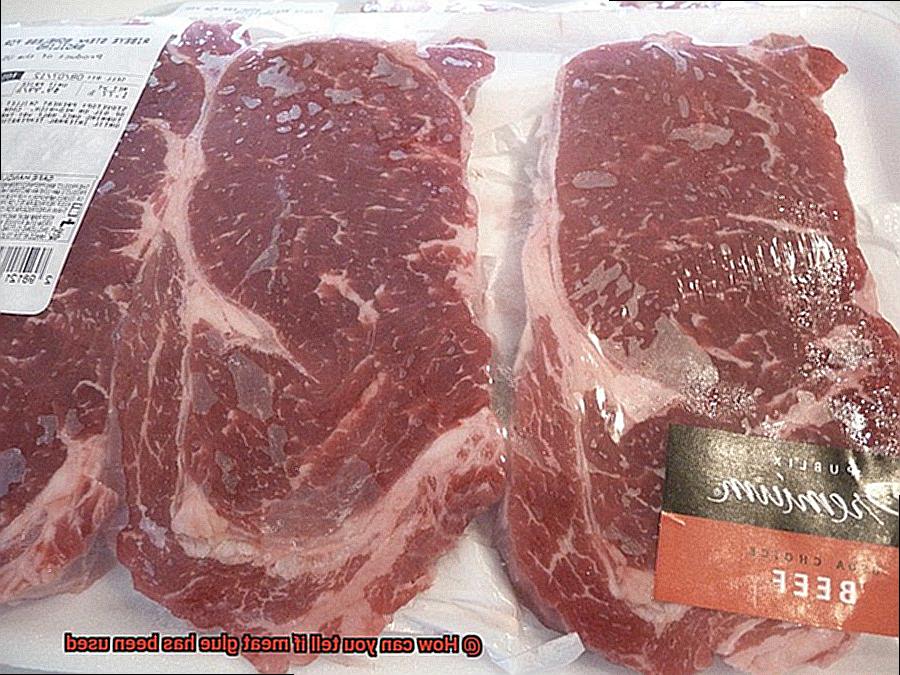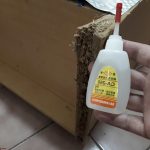You’ve probably heard whispers about this mysterious ingredient that chefs use to create culinary magic. But how can you tell if it’s been sneaked into your meal?
Meat glue, also known as transglutaminase, is an enzyme that binds proteins together. It’s like a sticky superhero that helps chefs seamlessly merge different cuts of meat and create visually stunning dishes. But with great power comes great responsibility, and some consumers are rightfully curious about what they’re putting on their plates.
Luckily, there are a few clues to look out for if you suspect meat glue has been used in your food. In this post, we’ll unravel the secrets behind identifying this elusive substance, so you can become a savvy detective when it comes to your meals. Get ready to uncover the truth about meat glue.
What is Meat Glue?
Contents
The secret behind these culinary masterpieces lies in a little-known ingredient called meat glue, scientifically known as transglutaminase. In this blog post, we will delve into the fascinating world of meat glue, exploring its uses, benefits, and potential concerns.
What is Meat Glue?
Meat glue is a powdered enzyme used in the culinary industry to bind pieces of meat together. It works by catalyzing a reaction between two proteins found in meat called myosin and actin. These proteins are responsible for the structure of muscle tissue.
Enhancing Appearance and Texture:
One of the primary reasons why chefs use meat glue is to create visually appealing and consistent portions of meat. By combining smaller cuts or trimmings, they can achieve a more desirable appearance for presentation purposes. The result is flawless cuts that are visually appealing and consistent, enhancing the overall dining experience.
Applications in Processed Meats:
The benefits of meat glue extend beyond fine dining establishments. It also finds its place in the production of processed meats such as sausages or ham. By using meat glue, manufacturers can bind different types of meats together, resulting in a cohesive product with improved texture, slicing, and packaging. This ensures a more enjoyable eating experience for consumers.
Safety Considerations:
Meat glue is considered safe for consumption when used correctly and adhering to food safety regulations. However, concerns arise regarding potential mislabeling or misuse. It is crucial for consumers with allergies or specific dietary restrictions to be aware of its presence in order to make informed choices about their food.
Identifying Meat Glue:
Detecting whether meat glue has been used can be challenging but not impossible. Look out for signs such as a seamless appearance, visible glue lines, unusually tender texture, or color inconsistencies. Alternatively, you can opt for laboratory testing to detect the presence of transglutaminase.
Obvious Signs of Meat Glue Usage
The secret may lie in the use of meat glue, scientifically known as transglutaminase. This controversial food additive is employed to bind pieces of meat together, resulting in visually appealing cuts. However, concerns regarding food safety and transparency have sparked discussions about its usage. In this article, we will explore the unmistakable signs that indicate the presence of meat glue in meat products.
Flawless Uniformity:
One cannot help but marvel at the seamless appearance of meat treated with glue. The absence of visible seams or joints in a piece of meat is a telltale sign of its usage. This visual transformation is particularly evident in processed meats such as deli meats or chicken nuggets.
Texture Transformation:
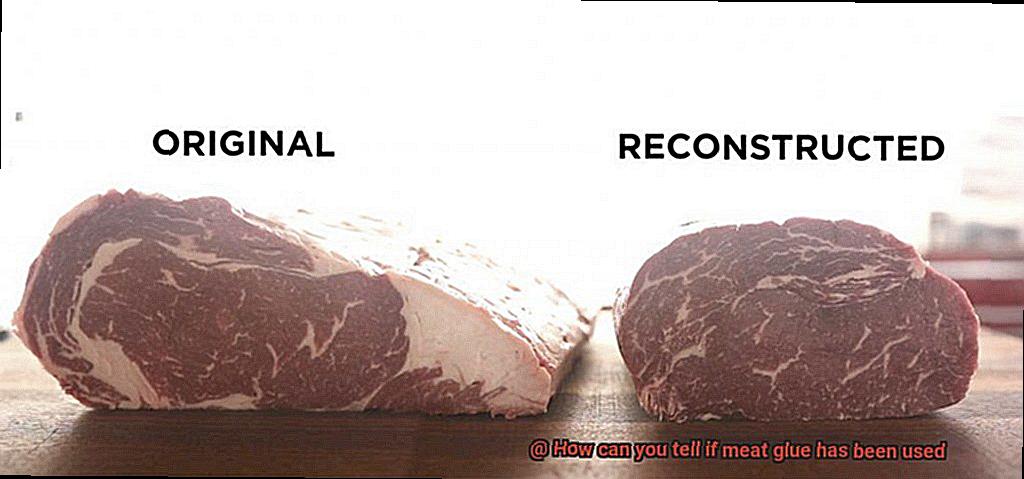
The use of meat glue can lead to a slight alteration in the texture of the meat. Due to the enzyme present in the glue, proteins within the meat are broken down and new bonds are formed. Consequently, the texture may become slightly rubbery or unnatural compared to natural muscle fibers.
Fragile Integrity when Cooked:
Normally, cooked meat should retain its shape and hold together. However, if glued pieces are used, they may easily separate into individual muscle fibers when subjected to heat. This fragility during cooking is a clear indication of meat glue usage.
Unconventional Shapes and Amplified Size:
Keep an eye out for irregularly shaped or disproportionately large pieces of meat—it could be a sign that they have been artificially created using meat glue. By bonding smaller cuts together, manufacturers can craft larger portions that appear more substantial.
Inconsistent Coloring:

Meat that has undergone gluing can exhibit inconsistent coloration, with different sections appearing slightly different shades. This disparity arises from how the glue affects moisture retention and the meat’s absorption of marinades or seasonings.
Visible Glue Lines
Behold, the magic of meat glue, also known as transglutaminase. In this article, we will embark on a journey to unravel the mystery of visible glue lines on meat products. Prepare to become a master detective in your own kitchen.
Examining the Surface:
To uncover those sneaky glue lines, we must first closely examine the surface of the meat. Armed with a sharp knife or a pair of tweezers, gently peel back any loose or flaky parts. Watch out for irregularities and variations in color and texture; these are the telltale signs of glue lines lurking beneath.
Inconsistencies in Grain:
Ah, the grain, a reliable witness to the binding trickery. Take notice if the muscle fibers seem to be going their separate ways or if there are abrupt changes in texture. These are red flags indicating that meat glue has been at work. The natural alignment of muscle fibers can be disrupted during the binding process, leaving behind visual irregularities that betray its presence.
Patterns and Designs:
But wait. Not all visible glue lines are cause for alarm. Some culinary geniuses employ meat glue deliberately to create jaw-dropping patterns and designs on the surface of their edible art. These intricate presentations showcase the prowess and creativity of chefs rather than pointing to inferior quality.
Buying from Reputable Sources:

If doubts persist about whether your meat products have been tampered with, it is wise to seek refuge in reputable sources. Ask probing questions about their production methods and demand transparency and honesty. By doing so, you can make informed choices and protect yourself from foul play.
Unusual Texture and Tenderness

Prepare to embark on a gustatory adventure as we explore how this culinary illusionist’s tool creates the most extraordinary textures and tenderness in our beloved meat dishes. So, fasten your aprons and let’s dive deep into this intriguing realm.
Unmasking the Unusual:
Imagine sinking your teeth into a succulent piece of meat, only to be greeted with an unexpectedly smooth and uniform texture. This is the telltale sign that meat glue has been skillfully employed. The result? An almost otherworldly consistency that caresses your palate like velvet.
The Inconsistency Conundrum:
There’s a twist to this tale. While some parts of the meat may be exceptionally tender, almost melting in your mouth, others might retain a hint of chewiness or resistance. This delightful inconsistency in tenderness adds an element of surprise to every bite, tantalizing your taste buds with a unique sensory experience.
Detecting the Deception:
Now, you may be wondering how to uncover this hidden secret. Fear not, for we have the tools to unravel the mystery. Examine the meat closely – run your fingers over its surface. Does it feel unnaturally smooth? Is there a lack of natural grain pattern? These telltale signs indicate that meat glue may have worked its magic.
Seams and Surprises:
In some cases, different cuts of meat are ingeniously bound together using transglutaminase, resulting in visible seams or lines. These intriguing marks are evidence of the artistry behind creating larger, seamless pieces of meat from smaller ones. It’s like a culinary jigsaw puzzle, meticulously assembled to delight both the eyes and the taste buds.
Conclusion:
As we bid adieu to this enchanting journey, let us remember that not all unusual textures and tenderness in meat indicate the use of meat glue. Cooking methods and other factors can also influence these characteristics. However, if you encounter an exceptionally smooth surface that defies natural grain patterns or detect visible seams, it’s likely that meat glue has been employed.
Color Inconsistencies
Prepare to embark on a journey that unravels the mysteries behind those tantalizing textures and heavenly tenderness that leave us yearning for more.
At the heart of this culinary sorcery lies meat glue, scientifically known as transglutaminase. This natural enzyme possesses the power to bind meat together, creating seamless cuts that defy our expectations. But how can we identify its presence? The answer lies in the realm of color inconsistencies.
Imagine this: you’re seated at your favorite steakhouse, eagerly awaiting that moment of carnivorous delight. As your plate arrives, take a moment to observe its hues. Look closely, for within the depths of that succulent piece of meat, color variations hold the key.
Delve into its pink and red tones. Do you notice subtle shifts within the same cut? These variations, dear readers, are telltale signs that meat glue has played a role in crafting this gastronomic masterpiece.
But rest assured, spotting these nuances requires keen observation. Run your fingers over the surface; does it feel unusually smooth? And here’s another tip: keep an eye out for uneven distribution of color within the meat. Darker patches juxtaposed against lighter ones may serve as a silent nod to the presence of this culinary illusionist.
Why is this knowledge important, you may wonder? Well, dear readers, color inconsistencies act as guardians for those seeking authenticity in their meat products. They unveil the curtain behind which lies naturally sourced cuts, allowing us to discern between genuine creations and those cleverly assembled through the wizardry of meat glue.
Imagine savoring your steak and discovering visible seams or lines, like an edible jigsaw puzzle meticulously pieced together. It’s a testament to the artistry involved in forging larger, seamless pieces of meat from smaller ones. The absence of natural grain patterns further illuminates the craft of this culinary illusionist.
Laboratory Testing for Transglutaminase Presence
The secret behind this culinary wizardry lies in an enzyme called transglutaminase, or as it is more commonly known, meat glue. But how do we uncover its presence in meat products? Let us plunge into the fascinating world of laboratory testing methods used to unravel this mystery.
One of the most frequently employed tests is the ELISA (enzyme-linked immunosorbent assay) test. This method detects specific proteins or antibodies that are produced in response to the presence of transglutaminase. A small sample of the suspected meat product is taken and meticulously analyzed in a laboratory setting. The sample is skillfully mixed with reagents that react with any transglutaminase present, resulting in a captivating color change or other detectable signal. By precisely measuring the intensity of this signal, we are able to determine the concentration of transglutaminase in the sample.
Another remarkable method is polymerase chain reaction (PCR) analysis. This technique amplifies DNA sequences, enabling their detection and identification. In the case of transglutaminase, specific DNA markers associated with the enzyme are selectively targeted and amplified. By astutely comparing the amplified DNA sequences from a meat sample to known transglutaminase DNA sequences, we can discern whether transglutaminase has been employed.
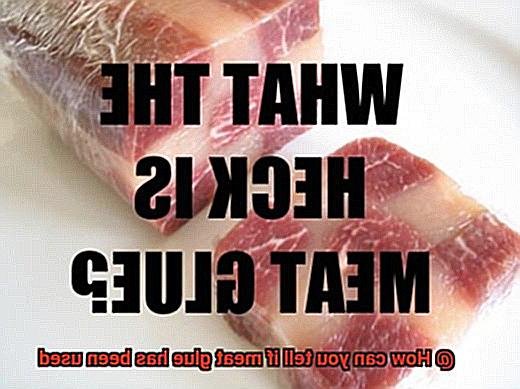
Enter mass spectrometry, another formidable tool used to detect transglutaminase presence. This technique measures the mass-to-charge ratio of molecules in a sample, allowing for the identification and quantification of specific compounds. By conducting a meticulous analysis of a meat sample using mass spectrometry, we can astutely detect the presence of transglutaminase based on its distinctive mass spectrum.
However, it is vital to note that these laboratory tests require specialized equipment and expertise, which is why they are typically performed by highly trained professionals in accredited laboratories. This ensures that the results obtained are accurate and reliable, providing invaluable information for consumers, regulators, and the food industry.
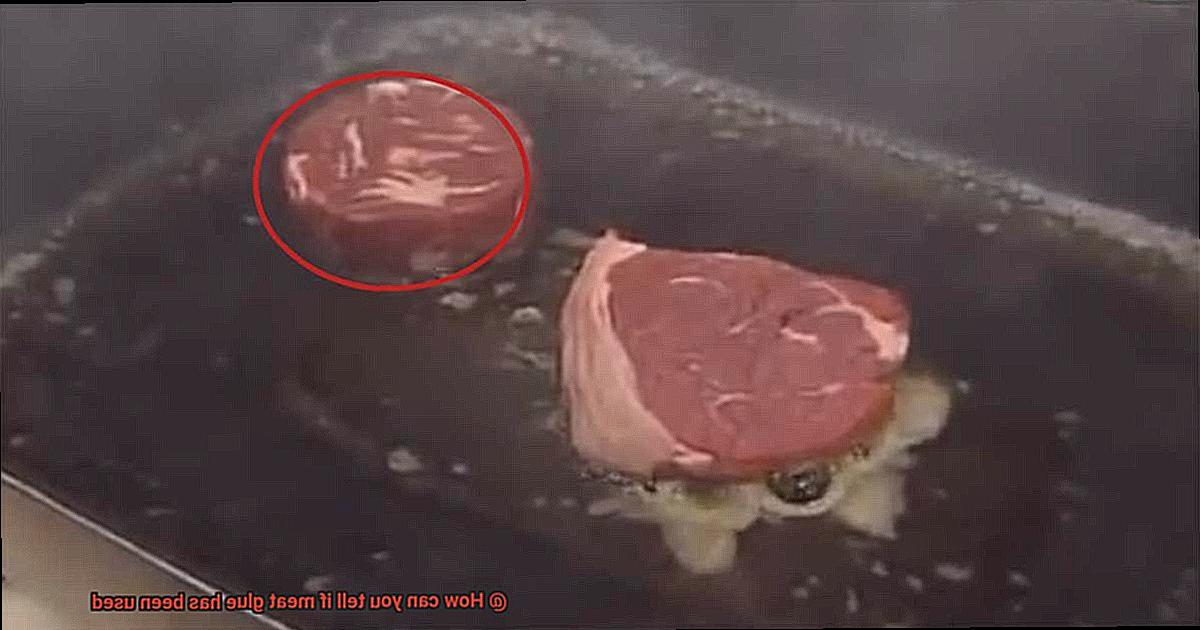
Other Factors that can Affect Appearance and Texture
When it comes to meat, appearance and texture are crucial elements that determine our dining experience.
While meat glue has gained attention for its role in shaping these characteristics, there are numerous other factors at play.

Join us on a fascinating journey as we delve into the world of meat and uncover the secrets that influence its appearance and texture.
The Animal’s Diet:
Similar to humans, the diet of animals significantly impacts the quality of their meat. Grass-fed animals produce leaner meat with a more natural texture and flavor. Moreover, grass-fed meat often boasts a darker and richer hue due to the diverse nutrients present in their diet.
Age and Maturity:
The age of an animal plays a vital role in determining the tenderness of its meat. Younger animals offer more tender cuts as their muscles are still developing. Conversely, older animals may have tougher meat due to increased connective tissue and denser muscle fibers.
Cooking Method:
The way we cook meat can greatly influence its appearance and texture, creating a symphony of flavors and sensations. Grilling or searing at high temperatures creates a delectably crispy exterior while maintaining a juicy interior. In contrast, slow cooking methods like braising or stewing break down tough connective tissues, resulting in a tender and succulent texture.
Handling and Storage:
Proper handling techniques and storage practices are crucial in preserving the quality of meat. Mishandling or improper storage can lead to bacterial growth, spoilage, and unwanted changes in texture and appearance. By following proper hygiene protocols, we can ensure that our meat remains fresh, flavorful, and visually appealing.
Additives and Preservatives:
Some commercially processed meats contain additives like sodium nitrite or phosphates, which can alter the color, flavor, and texture. While these additives are used to enhance appearance and extend shelf life, it is crucial to regulate their usage within acceptable limits for food safety.
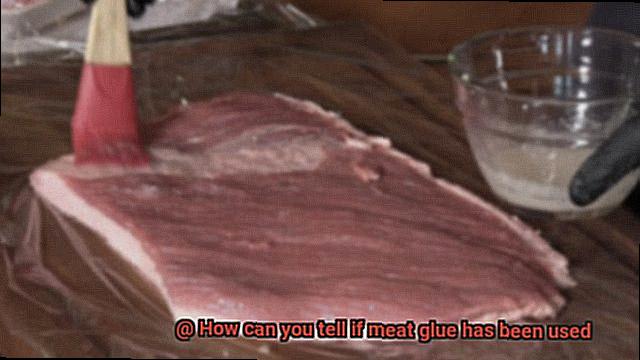
EhrSX2UNChg” >
Conclusion
In conclusion, detecting the use of meat glue in your food may present a challenge, but it is far from insurmountable. By sharpening your powers of observation and honing in on key clues, you can transform into a cunning detective when it comes to unmasking the presence of this elusive substance.
One unmistakable indicator of meat glue usage lies in the flawlessly uniform appearance of the meat. If there are no visible seams or joints, and the cuts seamlessly meld together as if by magic, chances are high that meat glue has been employed. Moreover, keep a close eye on texture transformations and fragility during cooking; an unnaturally smooth or rubbery texture, or pieces that effortlessly separate when subjected to heat, serve as additional telltale signs.
Color inconsistencies also act as revealing fingerprints left behind by meat glue. Be on the lookout for variations in color within the same cut of meat, as well as uneven distribution across its surface. These disparities provide strong evidence that different sections have been artfully bonded together using this deceptive adhesive.
If lingering doubts persist regarding the use of meat glue, laboratory testing emerges as a viable option. Sophisticated tests such as ELISA, PCR analysis, and mass spectrometry possess the power to detect specific proteins or DNA markers associated with transglutaminase—the primary component found in most commercial meat glues.
Nevertheless, it is crucial to acknowledge that not every peculiar texture or tenderness in meat signifies the presence of meat glue. Other factors like cooking methods and inherent characteristics of the animal itself can also influence these attributes.

